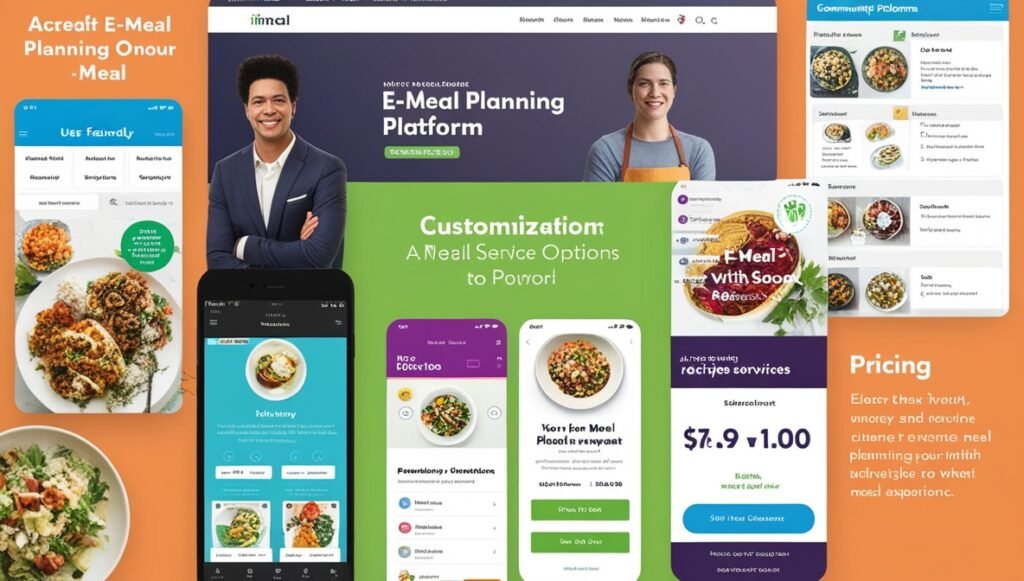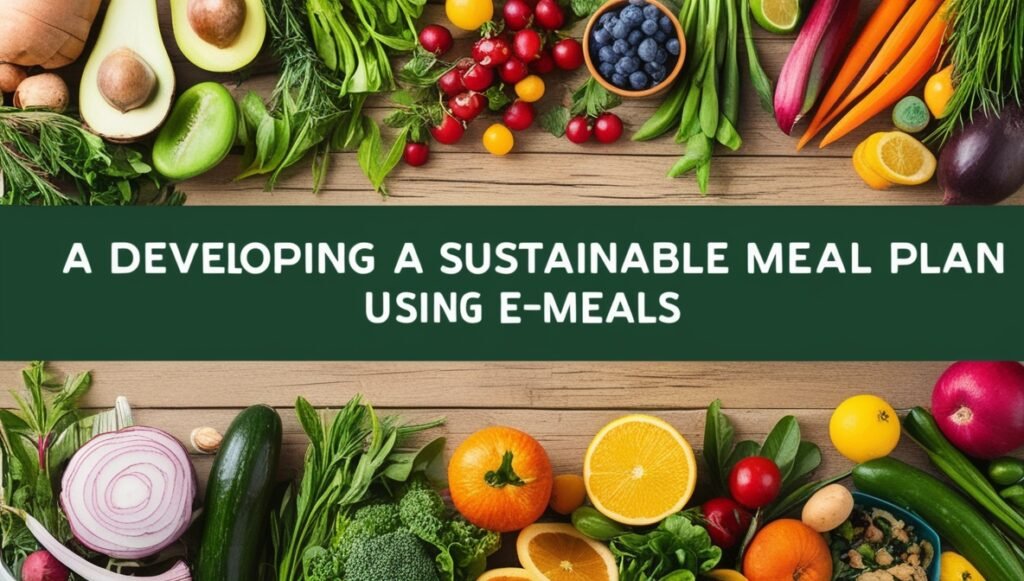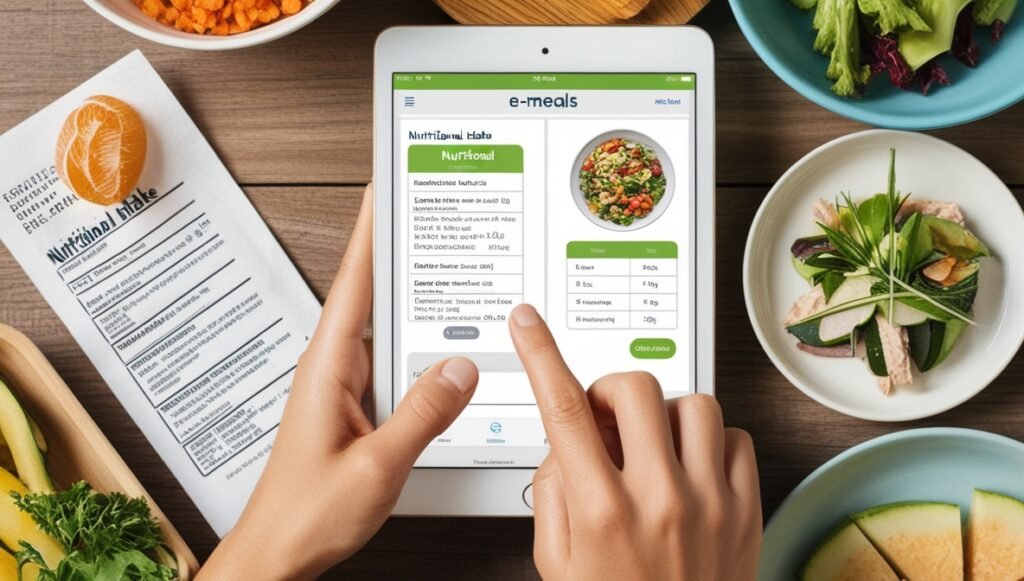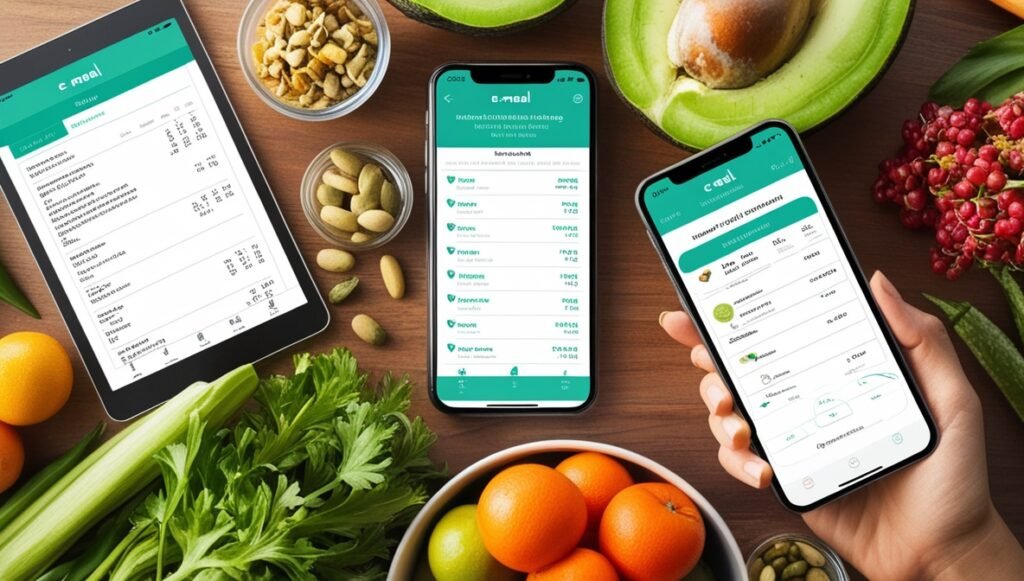What is an E-Meal?
E-meals represent a modern approach to meal planning, leveraging digital technology to simplify the process of preparing meals. At its core, an e-meal is a customized meal plan created and managed through online platforms or mobile applications. This innovation has revolutionized how individuals and families approach food preparation, making it more accessible and efficient.
The concept of online meal planning has evolved significantly with technological advancements. Originally, meal planning involved a manual process of piecing together recipes and grocery lists from various sources. However, the rise of e-meals has streamlined this process, allowing users to access numerous recipes and meal plans in one convenient location. Users can now find dedicated apps and websites that not only provide meal ideas but also generate shopping lists based on selected recipes.

One of the standout features of e-meals is their ability to cater to specific dietary preferences and restrictions. Whether someone follows a vegetarian diet, has food allergies, or wants to adhere to a low-carb lifestyle, e-meal platforms offer options that can be tailored accordingly. This personalization ensures that individuals receive meal suggestions suitable for their unique needs, enhancing their overall dining experience.
The benefits of adopting e-meals extend beyond convenience and personalization. By utilizing these digital solutions, users can save time while also reducing food waste, as precisely curated meal plans often lead to better grocery shopping habits. Additionally, many e-meal services include nutritional information for each recipe, empowering users to make informed dietary choices.
In summary, e-meals encapsulate the fusion of technology and nutrition, transforming traditional meal planning into a highly efficient and personalized process. As more individuals seek healthier lifestyles, the popularity of e-meals continues to grow, solidifying their role in modern culinary practices.
The Benefits of E-Meals
The adoption of e-meals, or online meal planning, is rapidly transforming how individuals approach their dietary habits. One of the most significant benefits is the time-saving convenience these platforms offer. Traditional meal planning can be tedious and time-consuming, involving grocery lists, researching recipes, and calculating portion sizes. E-meals simplify this process by providing tailored meal plans based on dietary preferences and nutritional goals, thereby allowing users to spend less time planning and more time enjoying their meals.
Improved dietary habits are another notable advantage of integrating e-meals into one’s lifestyle. Many e-meal services focus on balanced, nutritious recipes that promote healthier eating. By following structured meal plans, users often find it easier to consume a variety of foods and nutrients, which can lead to better overall health outcomes. According to a recent study, individuals using e-meal services reported a 30% increase in their intake of fruits and vegetables within the first month of use.

Cost-effectiveness is also a compelling reason to consider e-meals. Meal planning through these platforms often helps users reduce grocery expenses by minimizing impulse purchases and eliminating food waste. Many e-meal services offer features that enable users to create shopping lists tailored to the exact ingredients required for their weekly plans. This streamlined grocery shopping not only reduces food spoilage but can lead to savings of up to 20% on monthly grocery bills.
Lastly, e-meals provide an opportunity to explore new cuisines and culinary traditions. With diverse recipe options spanning various cultures, users can broaden their culinary repertoire without the stress of planning. Engaging with global flavors can foster a greater appreciation for different cuisines, enhancing the overall dining experience. This exposure to new ingredients and cooking techniques can reignite enthusiasm for home cooking, making mealtime more enjoyable.
Choosing the Right E-Meal Platform
Selecting an appropriate e-meal planning platform can significantly enhance your meal preparation experience. With a plethora of options available, it is essential to evaluate various factors to ensure the chosen platform aligns with your needs. The first consideration is user-friendliness; a platform should provide an intuitive interface, allowing users of all skill levels to navigate efficiently. An easy-to-use application can make meal planning less daunting and more enjoyable.
Customization options are another critical element to consider. The ideal e-meal platform should allow you to tailor meal plans according to your preferences, whether it be picking specific cuisines, dietary restrictions, or serving sizes. For instance, features enabling gluten-free, low-carb, or vegan selections cater to individuals with unique nutritional needs. It is also beneficial if the platform offers recipe substitution suggestions, which can further facilitate customization.

Pricing is a vital consideration when choosing an e-meal service. Many platforms offer tiered subscription models, providing flexibility based on your budget. Some platforms may even provide free trials, allowing potential users to assess the service before committing. Carefully evaluate what is included in the pricing model, ensuring that you are receiving adequate value for the features offered.
Lastly, community support is an essential aspect to look for in an e-meal platform. Active forums, recipe sharing capabilities, and customer service accessibility can provide users with the assistance necessary for a smoother experience. Many platforms encourage user interaction, fostering a community that shares recipes and tips, which can further enrich the meal planning journey.
In comparing popular platforms like Mealime, Plan to Eat, and Eat This Much, you may find varying strengths in these areas. Mealime focuses on simplicity and ease of use, while Plan to Eat excels in its customization and community features. Understanding the benefits of each will aid in making an informed decision tailored to your meal planning needs.
Creating a Sustainable Meal Plan
Developing a sustainable meal plan using e-meals involves a systematic approach that aligns with individual dietary goals while embracing seasonal ingredients. The first step is to assess your dietary needs. Whether you aim to lose weight, manage health conditions, or improve overall wellness, setting clear dietary goals provides direction for your meal planning. Once these targets are established, you can more easily select recipes and meals that support your objectives.
Considering seasonal ingredients is crucial for a sustainable meal plan. Foods that are in season are not only fresher and tastier but often more affordable and environmentally friendly. By focusing on seasonal produce, you can introduce variety into your diet while helping reduce the carbon footprint associated with transporting out-of-season goods. Incorporate fruits and vegetables that are currently available in your local markets, as they can enrich your meals while promoting good health.

Dietary restrictions should also be thoughtfully considered when creating your meal plan. Whether you’re dealing with food allergies, intolerances, or lifestyle choices such as vegetarianism or veganism, it is important to adapt your menu accordingly. E-meals typically provide options that cater to various dietary preferences, enabling you to curate a meal plan that respects these needs without compromising on taste or nutrition.
Incorporating variety is essential to prevent meal fatigue, a common challenge in meal planning. Introducing diverse recipes, flavors, and textures into your weekly menu can keep things exciting, ensuring that you and your family remain engaged with healthy eating habits. Finally, personal and family preferences play a significant role in the success of a meal plan. Regularly seeking feedback and making adjustments ensures that the meal plan remains enjoyable and sustainable for all. This tailored approach to meal planning can foster a more positive relationship with food and a healthier lifestyle.
Integrating E-Meals into a Busy Lifestyle
In today’s fast-paced world, many individuals face the challenge of balancing work, family obligations, and social commitments, leaving little time for meal preparation. E-meals offer a convenient solution that can be seamlessly integrated into a busy lifestyle while promoting healthy eating habits. By adopting effective meal planning strategies, one can ensure a balanced diet without sacrificing precious time.
One effective approach is meal prepping. Setting aside a few hours each week to prepare meals in advance allows individuals to streamline their cooking processes. By choosing a day, such as Sunday, to cook multiple meals, busy professionals can have ready-to-eat options throughout the week. It is beneficial to consider recipes that store well or can be easily reheated, such as casseroles, soups, or grain bowls. Utilizing e-meals platforms can further enhance this practice, providing easy access to diverse recipes and nutritional information aligned with personal dietary goals.

Batch cooking is another useful strategy. This involves cooking larger quantities of certain ingredients, such as grains or proteins, which can serve as a base for multiple meals. For example, once quinoa is cooked, it can be used in salads, bowls, or served as a side with various proteins. This not only reduces cooking time but also minimizes food waste as multiple dishes can be crafted from similar components. Moreover, keeping a variety of spices and sauces on hand allows for the transformation of the same base ingredients into distinct meals throughout the week.
Lastly, utilizing leftovers smartly is crucial in maintaining a steady flow of meals without extra effort. Incorporating e-meals concepts can inspire creative repurposing of leftovers, such as turning roasted vegetables into a hearty frittata or using grilled chicken in a refreshing salad. By embracing these strategies, individuals can effectively manage their nutrition while navigating the demands of a busy life, ultimately enhancing their overall well-being.

Tracking Nutritional Intake with E-Meals
In recent years, the significance of tracking nutritional intake has gained considerable attention, particularly as individuals strive for improved health and well-being. E-meals, or electronic meal planning platforms, offer innovative solutions to assist users in managing their dietary habits. By providing standardized nutritional information and user-friendly interfaces, these platforms facilitate the process of logging and interpreting food consumption data.

One of the foundational aspects of effective nutritional tracking is understanding how to read and interpret nutritional labels. E-meal platforms often include detailed descriptions of various food items, ensuring users can easily access essential information such as caloric content, macro-nutrients like proteins, fats, and carbohydrates, as well as essential micronutrients such as vitamins and minerals. This level of detail empowers users to make informed decisions regarding their food choices, aligning them with their personal dietary goals.
Furthermore, many e-meal solutions include features that allow users to calculate their macro and micronutrient intake automatically. By inputting their meals and snacks, users can receive real-time feedback on their nutritional consumption, highlighting areas where they may need to adjust their intake. This immediate feedback mechanism serves not only as a tracking tool but also as a motivator to stay within their desired nutritional parameters.
To maximize the benefits of e-meal platforms, users need to set personalized nutritional goals based on their specific fitness objectives. Whether the aim is weight loss, muscle gain, or disease prevention, these platforms often provide the flexibility to tailor meal plans according to individual needs. By integrating daily calorie limits and nutrient ratios, users can efficiently adhere to their dietary plans while continuously monitoring their progress.

In conclusion, tracking nutritional intake through e-meals is a comprehensive approach that simplifies the complexities of dietary management. With the aid of these platforms, individuals can gain greater insight into their eating habits, ultimately leading to healthier lifestyle choices.
Overcoming Challenges in E-Mealing
As individuals embrace the concept of e-meals, various challenges can arise that may hinder the transition from traditional meal planning to an online meal planning system. One of the primary obstacles is the inherent resistance to change. Many people are accustomed to their established routines and may find it difficult to adapt to a new way of approaching meal preparation. Overcoming this resistance necessitates a gradual integration of e-mealing into one’s lifestyle. Starting with a few e-meal plans per week can ease the transition and allow individuals to become comfortable with the digital format.
Another common challenge faced by those adopting e-mealing is dietary boredom. Initially, the novelty of e-meal planning may be appealing; however, the repetition of certain recipes can lead to a lack of enthusiasm. To counteract this, it is beneficial to diversify meal options. Many e-meal platforms offer a wide array of recipes and cuisines, encouraging users to explore and experiment with new ingredients and techniques. Setting a rotating schedule that incorporates varied meal plans can also help maintain excitement in meal planning.

Moreover, cooking skills can pose a barrier to fully enjoying the e-meal experience. In particular, individuals with limited cooking experience may feel intimidated by complex recipes. To address this challenge, it is crucial to seek resources that provide step-by-step guidance, such as instructional videos or beginner-friendly recipes. Many e-meal applications and websites also offer cooking tips and skill-building tutorials, which can enhance confidence in the kitchen. Engaging in online cooking classes or community forums can provide encouragement and support, fostering a more positive approach to meal preparation.
In summary, addressing the challenges inherent in e-mealing can significantly enhance the experience. By gradually integrating this approach into daily life, diversifying meal options, and improving cooking skills, individuals can successfully navigate common obstacles and reap the benefits of a well-structured online meal planning system.
Success Stories: Real People, Real Changes
The advent of e-meals has brought about remarkable transformations in the eating habits of numerous individuals, showcasing the power of technology in fostering healthier lifestyles. One compelling narrative is that of Sarah, a busy professional who struggled to maintain a balanced diet due to her erratic schedule. After discovering e-meal planning solutions, she was able to streamline her grocery shopping and meal preparation processes. By implementing a structured meal plan tailored to her nutritional needs, Sarah not only improved her energy levels but also lost ten pounds over three months. She attributes her success to the convenience and flexibility offered by e-meal services, which enabled her to cook healthy meals even during her busiest days.

Similarly, John, a father of three, faced the challenge of providing nutritious meals for his family without succumbing to fast food options. After adopting an e-meal strategy, he realized that planning meals in advance not only saved time but also fostered family engagement in cooking. John began involving his children in selecting recipes and preparing meals, effectively transforming dinner time into a family bonding experience. This initiative not only led to healthier eating habits within his household but also nurtured a greater appreciation for cooking among his children.
Another inspiring example is Linda, who struggled with her weight for years. Through the implementation of e-meals, she discovered various healthy recipes and portion-control techniques that revitalized her meals. The visual appeal and simplicity of the e-meal format made it easy for her to adopt healthier choices, resulting in a significant weight loss of over twenty pounds. Linda emphasizes that her journey was not just about physical transformation; it was a profound lifestyle change that improved her overall well-being. These narratives resonate with the potential of e-meals, reflecting not just individual triumphs but also a broader movement towards healthier eating habits.
Future Trends in E-Mealing
The landscape of e-mealing is continuously evolving, driven by technological advancements and changing consumer preferences. One significant trend is the integration of artificial intelligence (AI) into meal planning platforms. AI-driven meal recommendations are set to enhance personalization, allowing users to receive customized meal plans based on their dietary preferences, caloric needs, and even food allergies. This technology analyzes user data and previous meal choices to curate a tailored menu that caters to individual tastes and nutritional requirements, thereby improving overall user satisfaction and dietary compliance.
Another emerging trend in the e-meal sector is the growing emphasis on sustainability. Many consumers today are increasingly conscious of the environmental impact of their food choices. E-mealing services are responding by offering meal plans that prioritize local, seasonal, and plant-based ingredients. Additionally, these platforms are likely to feature options for reducing food waste, such as providing recipes that utilize leftover ingredients or promoting meals that have a lower carbon footprint. As sustainability becomes a key purchasing factor, the e-meal industry must adapt to meet these evolving consumer demands.

Furthermore, as e-meals become more integrated into people’s daily lives, their influence on food culture and overall health will become more pronounced. Meal planning apps may incorporate community features that encourage sharing recipes, tips, and experiences, fostering a sense of community. This communal aspect could lead to more collaborative dining experiences and greater culinary experimentation among users. The anticipated growth of e-mealing not only signifies an individual health initiative but may also play a critical role in promoting healthier eating habits across entire populations.
In conclusion, the future of e-mealing holds great promise, with advancements in artificial intelligence and an increasing focus on sustainability shaping the way consumers approach meal planning. As these trends gain traction, they will likely redefine food culture and positively impact public health. The adaptability of e-mealing solutions to consumer needs will be essential to their success in the coming years.

You have observed very interesting points! ps decent website.
Hi! I could have sworn I’ve been to this site before but after checking through some of the post I realized it’s new to me. Anyways, I’m definitely happy I found it and I’ll be book-marking and checking back often!
Hello. splendid job. I did not expect this. This is a excellent story. Thanks!
Thank you so much for your kind words! I’m thrilled that you enjoyed it. Your appreciation means a lot. Stay tuned for more amazing content! 😊
Aw, this was a very nice post. In thought I would like to put in writing like this moreover – taking time and actual effort to make an excellent article… but what can I say… I procrastinate alot and not at all appear to get something done.